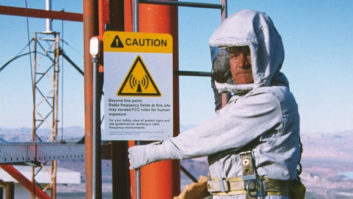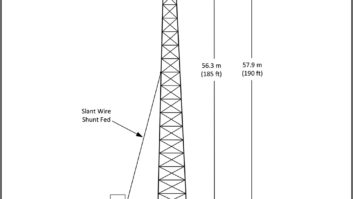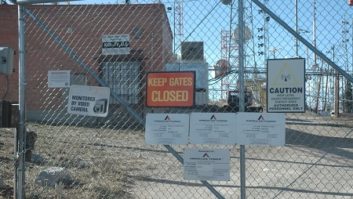FCC revising RF radiation rules
Aug 1, 2004 12:00 PM, By Harry Martin
The FCC expects to issue an order this fall revising some of the radio frequency (RF) radiation rules applicable to broadcast stations. In a proceeding that commenced last summer, the FCC is considering modifications to some of its RF evaluation and measurement procedures, addition of more specific definitions regarding “occupational” exposure, and elimination of inconsistencies in the RF radiation rules. The proposed rule will include revised procedures for determining whether a station is excluded from the requirement to evaluate RF radiation, a revised definition of the people to whom occupational/controlled exposure limits apply, and revised procedures for use of spatial averaging to show compliance with exposure limits.
- Who will be subject to routine RF evaluation?All broadcast stations currently are required to perform routine RF evaluations at certain times. The only proposed change would affect LPFM stations (because they operate at a maximum power of 100W). The FCC is considering excluding from the routine evaluation requirement those LPFM stations that have a separation distance of at least 3 meters between any portion of the radiating structure of the transmitting antenna and any area accessible to the general public or workers not meeting the criteria for the higher occupational/controlled RF exposure limits.For experimental broadcast stations, FM translators and FM boosters, the rules currently require routine RF evaluations if the power is greater than 100W. The FCC has proposed to require, in addition, routine RF evaluations for these stations that operate with 100W or less power if the distance separation is less than 3 meters. In this connection the FCC has asked whether it should adopt different distance separations for different frequencies for these stations.
- Definition For Occupational/Controlled Exposure LimitsThe RF radiation rules contain two sets of exposure limits. Higher occupational/controlled exposure limits apply to workers who are fully aware of the potential for exposure and can exercise control over their exposure. These higher limits also apply to transient individuals (i.e., those who pass through a controlled area subject to the higher limits) if they are made aware of the potential for exposure.For individuals meeting the occupational/controlled criteria, the FCC proposes to define “fully aware” as having received written and verbal information concerning the potential for RF exposure and training regarding appropriate work practices for controlling or mitigating exposure. Additionally, the term “exercise control” would be defined as the ability to reduce or avoid exposure by administrative or engineering work practices (as personal protective equipment or time-averaging exposure).
- Spatial-averagingSpatial-averaging is an RF radiation measurement technique used to determine the amount of RF exposure at a particular spot by averaging the electric and magnetic fields (squared) over an area equivalent to the area normally occupied by a standing human body. The FCC believes that there has been confusion about when the use of spatial-averaging is appropriate. It expressed concerns about situations where a localized (spatial peak) field intensity exceeds the exposure limits near an antenna (which is potentially accessible to workers or the public) despite the fact that the spatially averaged measurement over the area indicates compliance with exposure limits. The concern is that localized hot spots could lead to exposure in the body of a nearby person that exceeds the partial-body limits while not exceeding the whole-body limit. The FCC is seeking comments on how to ensure compliance in such situations and, in particular, when reliance on spatial-averaging is appropriate. Comments filed in the rulemaking suggested that spatial peak measurements alone may be sufficient to show compliance with exposure limits. The FCC is also seeking comments on procedures and techniques for whole-body spatial averaging, including the positioning of the observer relative to the antenna.Martin is president of the Federal Communications Bar Association and a member of Fletcher, Heald & Hildreth, Arlington, VA. E-mail[email protected].Dateline:Aug. 19 is the deadline for filing 2004 annual regulatory fees. On Oct. 1 radio stations in Iowa and Missouri must file their renewal applications and ownership reports with the FCC and place their annual EEO public file reports in their public files and post them on their websites. Also on Oct. 1, radio stations in Colorado, Minnesota, Montana, North Dakota and South Dakota must begin their renewal pre-filing announcements.












